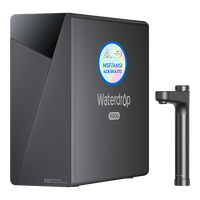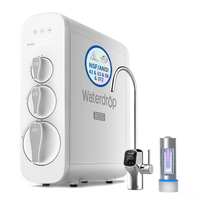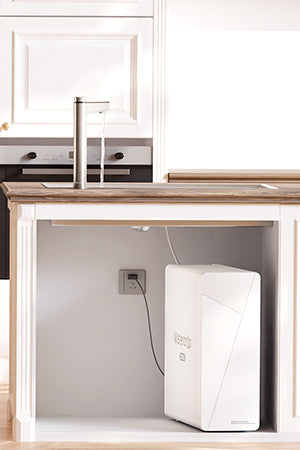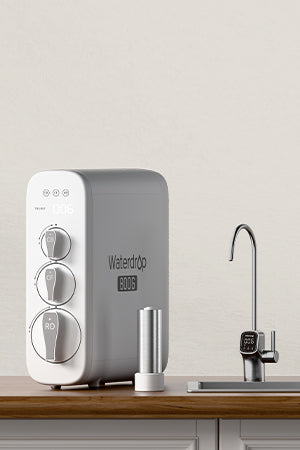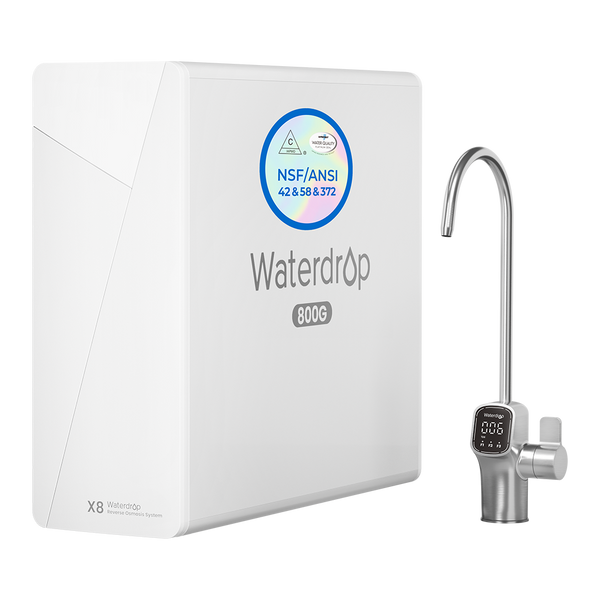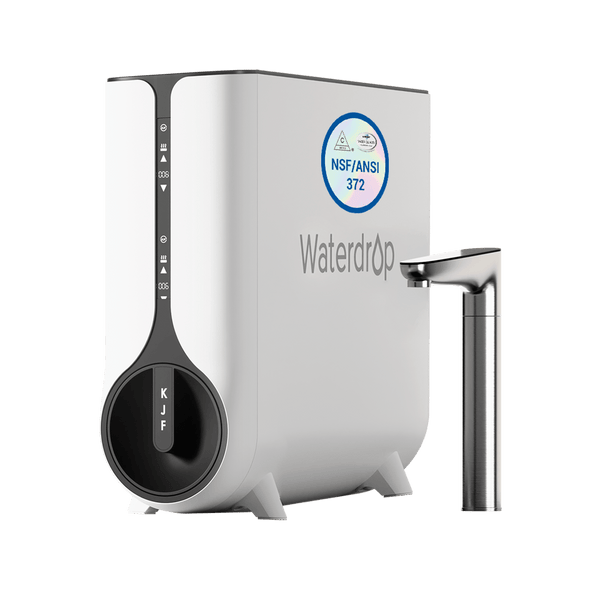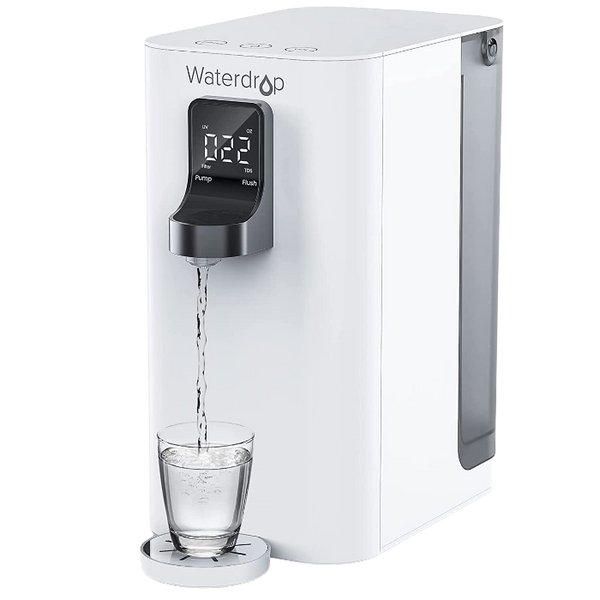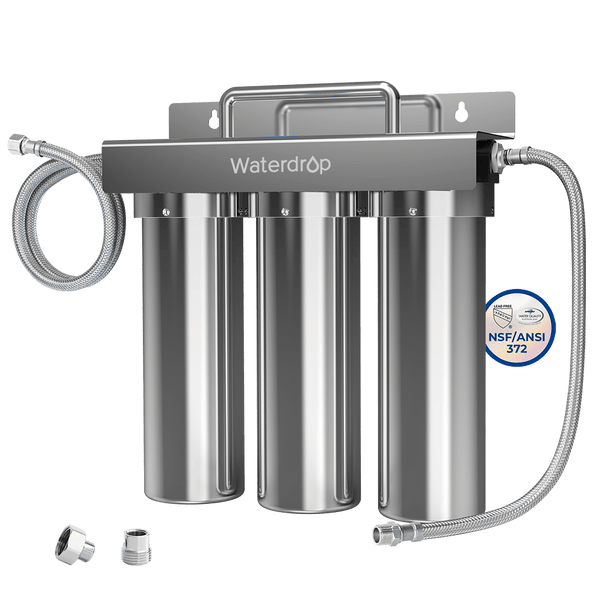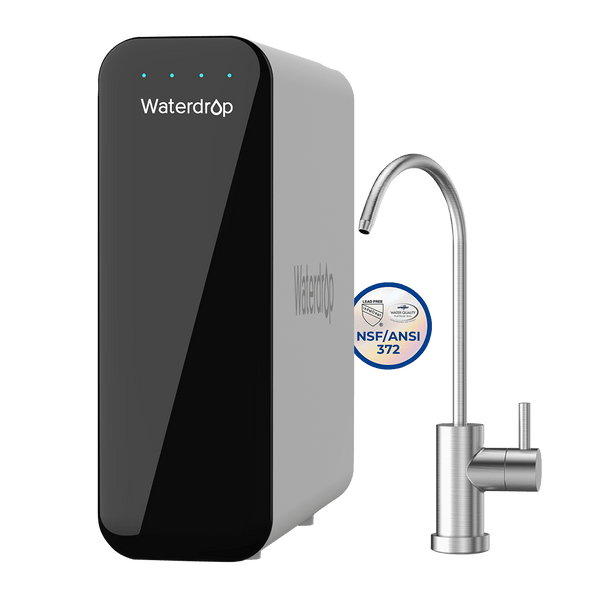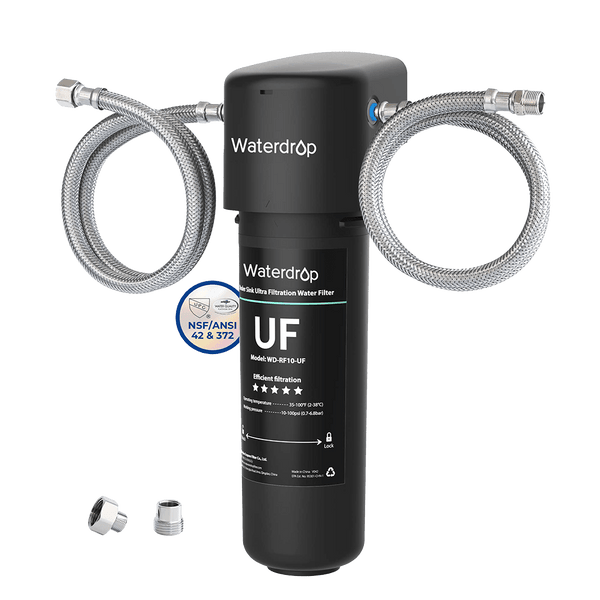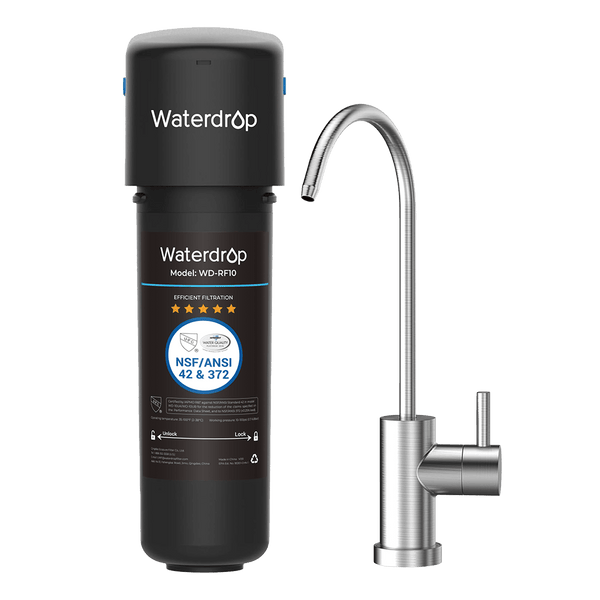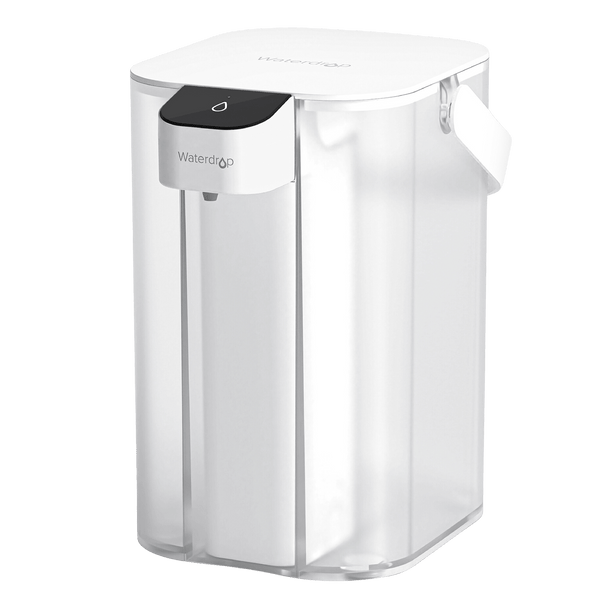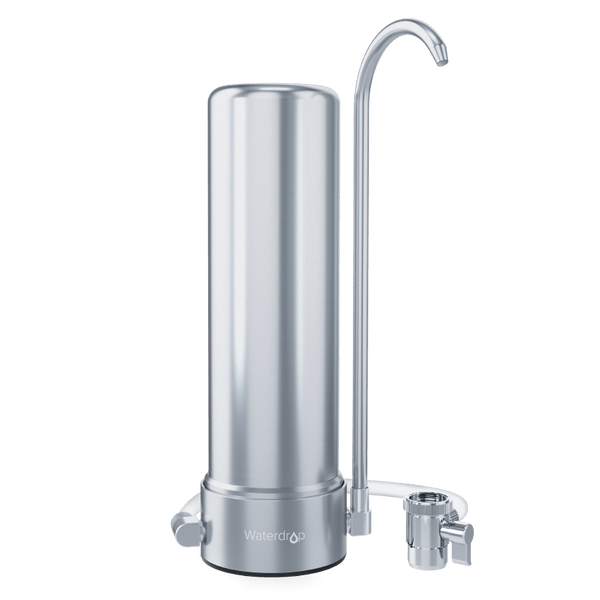Learn about NSF/ANSI Standard Certification with Waterdrop
NSF/ANSI standard certification is an important approval for water purificattion products, confirming they meet strict public health standards.



A Standard You Can Trust for Every Step of Your Water Journey
Contaminants Removal Overview
NSF/ANSI 58
NSF/ANSI 42
NSF/ANSI 53
NSF/ANSI 401
NSF/ANSI 372
NSF/ANSI Standard Certification stands for National Sanitation Foundatioon
| Contaminants | NSF/ANSI 58 | NSF/ANSI 42 | NSF/ANSI 53 | NSF/ANSI 401 |
|---|---|---|---|---|
| Arsenic | √ | √ | ||
| Lead | √ | √ | ||
| Fluoride | √ | √ | ||
| Chlorine | √ | |||
| PFOA/PFOS | √ | √ | ||
| Ibuprofen | √ | |||
| VOCs | √ | √ | ||
| TDS | √ |
NSF/ANSI 58: Reverse Osmosis Drinking Water Treatment Systems
The nsf certified meaning under the NSF/ANSI 58 standard focuses on reverse osmosis (RO) systems, ensuring they effectively reduce contaminants from water. With this certification, you can trust that your water is pure and safe.
| Test Parameter | Requirement |
|---|---|
| Total Dissolved Solids (TDS) | Must reduce by at least 75% |
| Arsenic | Water output concentration less than 0.01 mg/L |
| Lead | Must reduce by at least 96.7% |
NSF/ANSI 42: Improving Taste and Odor
Products certified under NSF/ANSI 42 effectively reduce chlorine and other odors, enhancing the taste of your water. Enjoy every sip with fresh and clean water.
| Test Parameter | Requirement |
|---|---|
| Chlorine Taste and Odor | Must reduce by at least 50% |
| Particulates (Class I) | Must remove at least 85% of 0.5 to <1 micron particles |
NSF/ANSI 53: Reducing Health-Related Contaminants
The NSF certification under NSF/ANSI 53 ensures that our water treatment systems remove harmful contaminants like lead, mercury, asbestos, and volatile organic compounds. Drink confidently, knowing your water is safe.
| Test Parameter | Requirement |
|---|---|
| Lead | Must reduce by at least 96.7% |
| Cysts | Must remove at least 99.95% |
| Atrazine | Must reduce by at least 66.7% |
| Volatile Organic Compounds (VOCs) | Must reduce by at least 95% |
NSF/ANSI 401: Tackling Emerging Contaminants
What does NSF mean in the context of NSF/ANSI 401? It means our products are designed to reduce emerging contaminants, such as pharmaceuticals and herbicides. Choose our products to protect your family from these hidden threats.
| Test Parameter | Requirement |
|---|---|
| Ibuprofen | Must reduce by at least 85% |
| DEET | Must reduce by at least 86% |
NSF/ANSI 372: Lead-Free Compliance
NSF certified products under NSF/ANSI 372 guarantee that all materials used are lead-free. Protect your health by ensuring your water is lead-free.
| Test Parameter | Requirement |
|---|---|
| Lead Content | No more than 0.25% weighted average |
A Standard You Can Trust for Every Step of Your Water Journey
Contaminants Removal Overview
NSF/ANSI 58
NSF/ANSI 42
NSF/ANSI 53
NSF/ANSI 401
NSF/ANSI 372
NSF/ANSI Standard Certification stands for National Sanitation Foundatioon
| Contaminants | NSF/ANSI 58 | NSF/ANSI 42 | NSF/ANSI 53 | NSF/ANSI 401 |
|---|---|---|---|---|
| Arsenic | √ | √ | ||
| Lead | √ | √ | ||
| Fluoride | √ | √ | ||
| Chlorine | √ | |||
| PFOA/PFOS | √ | √ | ||
| Ibuprofen | √ | |||
| VOCs | √ | √ | ||
| TDS | √ |
NSF/ANSI 58: Reverse Osmosis Drinking Water Treatment Systems
The nsf certified meaning under the NSF/ANSI 58 standard focuses on reverse osmosis (RO) systems, ensuring they effectively reduce contaminants from water. With this certification, you can trust that your water is pure and safe.
| Test Parameter | Requirement |
|---|---|
| Total Dissolved Solids (TDS) | Must reduce by at least 75% |
| Arsenic | Water output concentration less than 0.01 mg/L |
| Lead | Must reduce by at least 96.7% |
NSF/ANSI 42: Improving Taste and Odor
Products certified under NSF/ANSI 42 effectively reduce chlorine and other odors, enhancing the taste of your water. Enjoy every sip with fresh and clean water.
| Test Parameter | Requirement |
|---|---|
| Chlorine Taste and Odor | Must reduce by at least 50% |
| Particulates (Class I) | Must remove at least 85% of 0.5 to <1 micron particles |
NSF/ANSI 53: Reducing Health-Related Contaminants
The NSF certification under NSF/ANSI 53 ensures that our water treatment systems remove harmful contaminants like lead, mercury, asbestos, and volatile organic compounds. Drink confidently, knowing your water is safe.
| Test Parameter | Requirement |
|---|---|
| Lead | Must reduce by at least 96.7% |
| Cysts | Must remove at least 99.95% |
| Atrazine | Must reduce by at least 66.7% |
| Volatile Organic Compounds (VOCs) | Must reduce by at least 95% |
NSF/ANSI 401: Tackling Emerging Contaminants
What does NSF mean in the context of NSF/ANSI 401? It means our products are designed to reduce emerging contaminants, such as pharmaceuticals and herbicides. Choose our products to protect your family from these hidden threats.
| Test Parameter | Requirement |
|---|---|
| Ibuprofen | Must reduce by at least 85% |
| DEET | Must reduce by at least 86% |
NSF/ANSI 372: Lead-Free Compliance
NSF certified products under NSF/ANSI 372 guarantee that all materials used are lead-free. Protect your health by ensuring your water is lead-free.
| Test Parameter | Requirement |
|---|---|
| Lead Content | No more than 0.25% weighted average |
A Comprehensive Guide to Testing and Certification Requirements
NSF/ANSI 58, 42, 53 & 401
Material Safety
Ensure the product does not release harmful chemicals into the water.
Performance and Effectiveness
Check if the product effectively reduces certain contaminants.
Structural Integrity
Confirm that the product operates normally under varying water pressure conditions without malfunctioning, assess the system's long-term performance and reliability.
Manufacturing and Quality Control
Check the factory and quality control steps to make sure packaging and labels are correct and follow the rules.
A Comprehensive Guide to Testing and Certification Requirements
NSF/ANSI 58, 42, 53 & 401
Material Safety
Ensure the product does not release harmful chemicals into the water.
Performance and Effectiveness
Check if the product effectively reduces certain contaminants.
Structural Integrity
Confirm that the product operates normally under varying water pressure conditions without malfunctioning, assess the system's long-term performance and reliability.
Manufacturing and Quality Control
Check the factory and quality control steps to make sure packaging and labels are correct and follow the rules.
Discover Detailed Certification Information for Our Products
Reverse Osmosis System
Under Sink Filter
Countertop Filter
Additional Certifications beyond NSF/ANSI Standard Certification
Beyond NSF, our products are also certified by CE, FCC, IAPMO, TUV, WRAS, etc.










Want to Know the Specific Risks of These Contaminants?
Want to Know the Specific Risks of These
Contaminants?
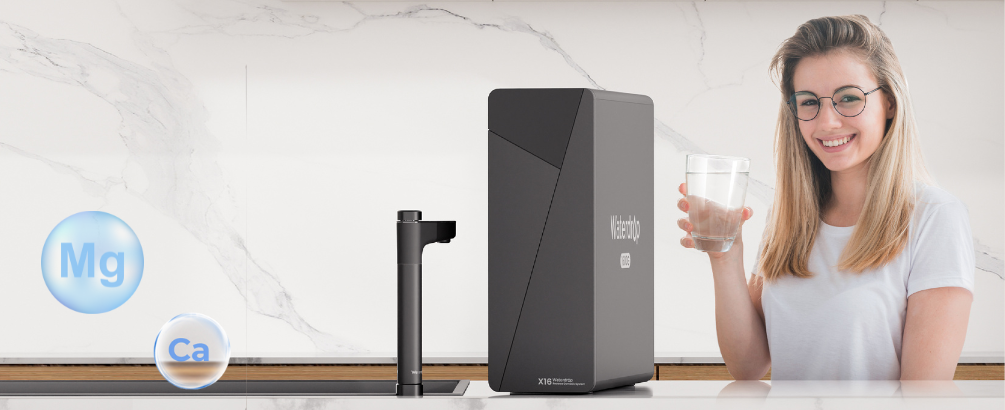
The Complete Guide to Reverse Osmosis Drinking Water Systems
January 17, 2025

Discover the Waterdrop X Series: A Complete Handbook on Reverse Osmosis System
September 03, 2024

Best Water Filtration System for Home
December 23, 2024









